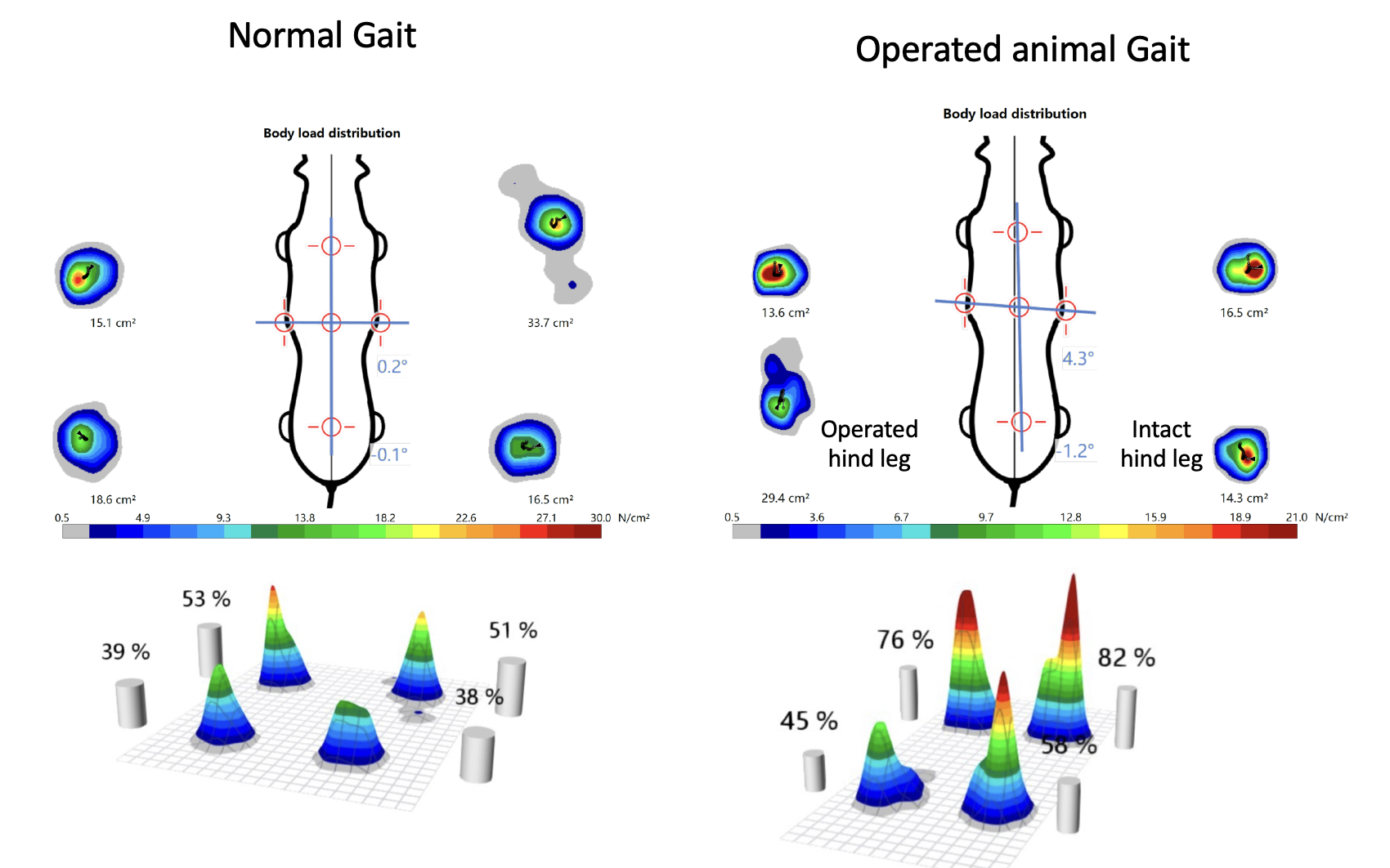Symptomatic Neuroma Model in Pigs
A neuroma develops when a nerve is damaged, resulting in a mass formation at the site of injury. This neuroma may be symptomatic and lead to persistent pain, tingling, or burning sensations along the nerve’s pathway. The symptomatic neuroma model involves peroneal nerve dissection.
Model Specifications
- Species: Domestic Pig or Göttingen Minipig
- Duration: 28 days, up to 6 months
- Readouts: tactile/mechanical allodynia, thermal hyperalgesia, gait analysis, behavior score, body weight, electrophysiology
- Endpoints: histology, biomarker analysis, IHC
Scientific Data
Gait analysis in the symptomatic neuroma model. The pig carries more weight on the intact hind leg than the operated hind leg 2 months after surgery.

Review the complete dataset.

Symptomatic Neuroma Model
Complete the short form for instant access to the complete data set.
Assessments
Neurological disorders often result in a combination of motor and cognitive deficits. Thus, behavioral assessments in conjunction with physiological readouts offer a broader understanding of the basic biological mechanism of disease and cognitive impairment, highly relevant to therapeutic developments.
Behavior
Pain behavior tests assess the response to various pain stimuli.
Biomarkers
Evaluate pro-inflammatory and anti-inflammatory biomarkers from CSF samples.
Histology
IHC and histological staining to evaluate inflammatory markers in the paw skin.
Electrophysiology
Evaluate spontaneous nerve firing using in vivo electrophysiology.




